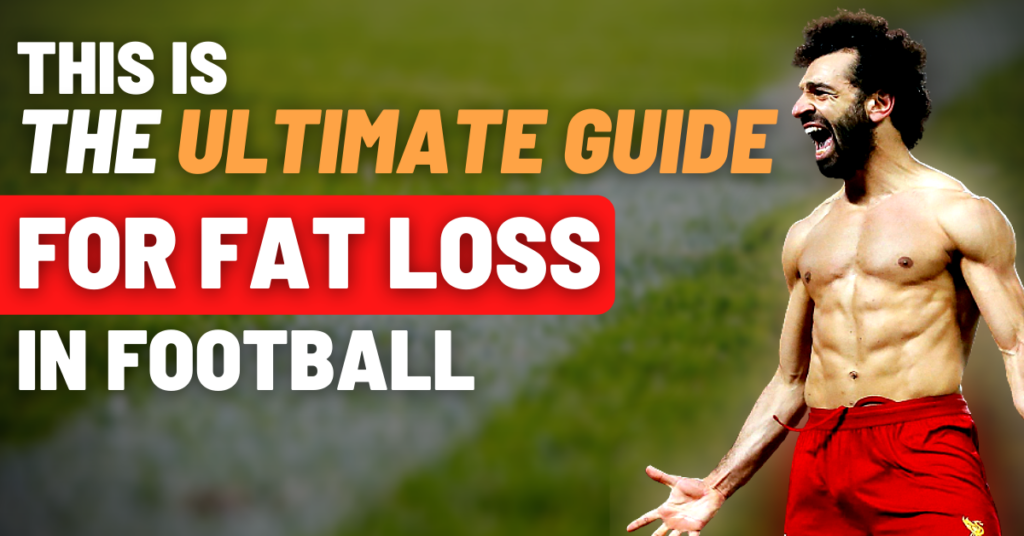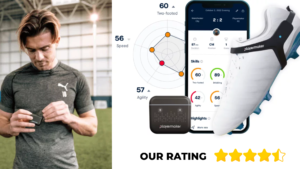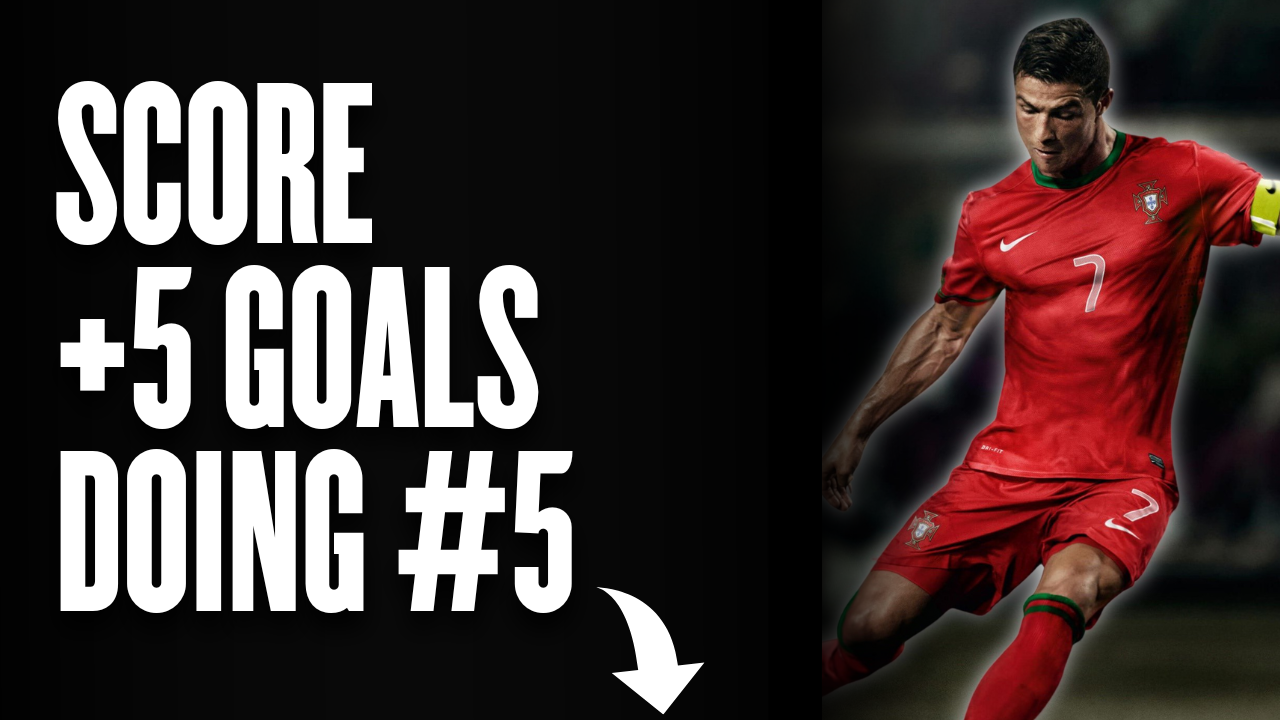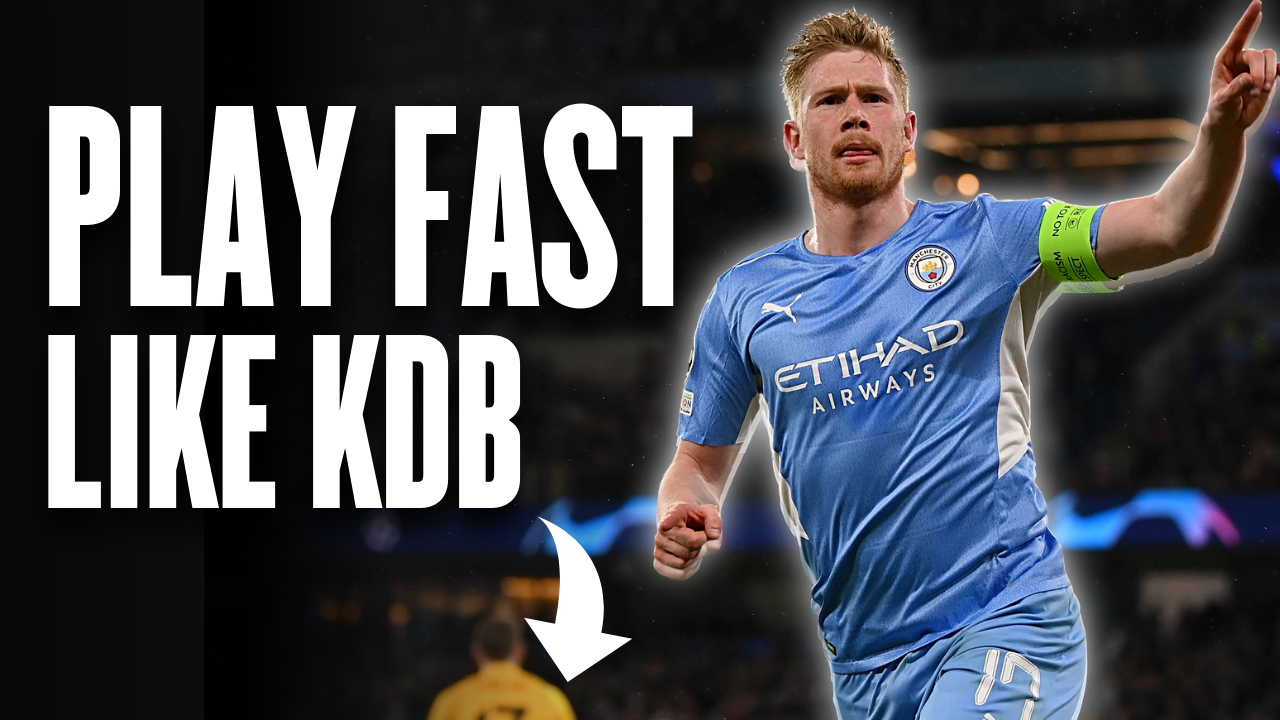
Fat loss is a very common goal among all sports, including football. After all, logic says that the more excess fat someone carries, the weaker and slower they are compared to lower fat athletes. The latter, in fact, can be extended to various areas of performance, beyond physical condition (technique, tactics, psychology, etc.). However, fat loss in football is anything but simple. It is a difficult process, both for the body and the mind. Therefore, some basic protocols and methods should be followed in order to a) achieve the desired goals and b) to minimize the impact of the whole process on the performance of the athlete, which we are going to analyze in this article.
IDEAL BODY FAT PERCENTAGE FOR FOOTBALL
Let’s start this article by clarifying something very important: the OBJECTIVE! We say we want to lose body fat. But what is our goal? Which number is our target percentage?
The truth is, there is no ideal body fat percentage. However, we can talk about a range of different percentages in which a footballer can meet the high demands of the game with better efficiency. According to a study published in the Journal of Sports Science, where they recorded the body fat percentages of 64 Premier League players (First League English Football), the average body fat was 10.6% (+ – 2.1%). [1] Based on this data and having in mind that the Premier League is one of the top leagues in the football world, we can conclude that a percentage of body fat that ranges between 8% and 12% is considered the “ideal zone” to be in.
Of course, there are going to be exceptions (both in the lower and higher end), but admittedly this is the body fat zone in which a footballer should aim to be, in order to maximize his/her performance.
FAT LOSS IN FOOTBALL 101
Fat loss in football is a process that is quite easy to explain in theory, but very difficult in practice. The process becomes even more difficult when the player is playing regular competitive games (in-season). We will analyze all the possible cases below and we will create a step-by-step process towards success. There are many apps and calculators out there on the internet, that will help you find out the numbers we describe below.
Calorie Deficit
Fat loss in football (and any other sport) requires you to stay in a calorie deficit. This basically equals consuming fewer calories than your body burns on a daily basis.
BMR (Basal Metabolic Rate)
Your body uses a certain number of calories every day to serve its various biological needs. This number is called the BMR (Basal Metabolic Rate) and is equal to the number of calories your body consumes while at complete rest (yes, your body even burns calories while you sleep or watch Netflix). However, given that you’re a football player, you live an active lifestyle (active to very active depending on your playing level). These extra calories you burn by walking or playing the sport, are added to your BMR and make up the total number of calories you burn each day. That’s the number you need to stay under in order to lose excess fat.
Activity Level
In football, however, this final number of calories varies considerably depending on the training/match-day and the season. For example, while you are in-season, your body uses fewer calories on rest and recovery days due to the lower training load. Another example is the difference between the seasons. During the off-season, where the intensity and volume of your training sessions usually drops (compared to the regular season) and there might also be small periods of complete rest (vacations), the body’s caloric needs fall significantly. Having said that, the need of adjusting your caloric intake depending on your activity level is really important in a fat loss process.
Is A Calorie Deficit Good In-Season? (+ Solutions)
Finally, we must note that a calorie deficit is not suitable for footballers who are in-season. The reason behind this is that calories equal energy, energy that the body needs to reach levels of high performance. However, if the athlete’s performance is significantly hindered by his/her bodyweight and excess fat, then we can introduce a caloric deficit in his/her diet, as a decrease in fat will result in better performance levels opposed to a high caloric intake and a high bodyweight and body fat (exceptions exist). Another solution to this problem is a small calorie deficit (100 to 200 calories down) so that there is as little impact on performance as possible. In this case, expect a much slower process and slower, visible results.
High Protein Intake
A common problem during the fat loss process is the loss of muscle mass. Your goal should be to minimize this phenomenon. In fact, it is now proven that with the right action-plan you can even reverse this effect or at least minimize it.
So one of these basic steps to combat this problem is to introduce a high protein intake in your nutrition. The American College of Sports Medicine proposes a protein intake ranging between 1.2 and 2g of protein per kilogram of body weight. [2] As high performance athletes, it would be preferable to be closer to the 2g mark.
Protein is a key nutrient for the human body. It plays a major role in the reconstruction process of muscle microtrauma (caused by exercise) and the production of new muscle mass. The process by which all this is done is called muscle protein-synthesis. A process in which proteins play an important role. The preference for lean protein sources, such as e.g. chicken breast, chickpeas, fat-free grekk yoghurt etc. is considered more helpful in achieving your caloric goals.

*As an affiliate, I'm earning from qualifying purchases without any extra charges being placed on you.
Regular, High Quality Training
The second important step in maintaining or even increasing your muscle mass during this process is regular exercise. Regardless of the season you’re in, the introduction of strength and power training in your weekly training regimen is considered necessary and particularly beneficial. The benefits are not limited to your fat loss goals, but also extend to your performance. The introduction of fitness training programs will have a positive effect on athletic performance. At the same time, muscle mass loss (due to caloric deficit) will be reduced or may even be zeroed.
However, these training units should always be aligned with a) the individual particularities of the athlete and b) the overall work-load of the player (including team training). During the season the goal is to maximize performance on game-day, therefore, any training activity should aim there. The off-season is the ideal season for fat loss, since the athlete has no competitive team obligations and can focus on his personal development.
TIPS THAT WILL MAKE THE PROCESS EASIER
Vegetables & Big Salads
Salads and vegetables in general, have a very low caloric value while occupying a relatively large volume when consumed in larger quantities. What we achieve by consuming big salads and portions of vegetables is satiety, the feeling that we are full and not hungry. This feeling is caused due to vegetables being high n dietary fiber. A big salad can easily replace even an entire meal. In this case, you might as well add a source of protein (chicken, tuna, beans, etc.).
Drink Lots of Water
Apart from the fact that water is very important for the proper hydration of the body, it also contributes to the feeling of satiety. So make sure you consume water sporadically throughout the day. An athlete needs about 40-60ml per kilogram of body weight on a daily basis. Calculate your number and consume this amount in small doses throughout the whole day.
Avoid High Calorie/Low Volume Foods/Drinks
This food/beverage category is not solely responsible for fat gain. The responsibility falls on the caloric surplus (high calorie foods increase your overall caloric intake quite quickly). However, these foods and beverages can certainly make the whole process more difficult for you, as larger amounts are required to achieve the feeling of satiety, which in this case, will add a lot of calories to your diet. Usually, these foods are either high in fat or high in sugar and/or flour. Don’t abundon them, just avoid them.
Here’s a list of such foods and drinks:
- Soft drinks
- Sauces (high in sugar)
- Dried fruits
- Cooking oils (large quantities)
- Avocados
- Sweets
- Candy
- Pastries
- Alcohol
- Nuts & Seeds
Meal Prepping
Many times, the athlete does not have the time to cook. As a result, fast food options are preffered. Preparing meals is a great way to combat this. It offers convenience and clarity on what you put inside your body. So if you have a very tight schedule, I highly suggest you to start meal prepping.
Snacking
Snacks are especially popular among people and athletes. Sometimes they are used to stop hunger and sometimes as performance enhancements. Our goal is to regulate this category of food to meet our caloric and nutritional needs. Their quantity depends on the distribution of calories in your nutrition. Their quality, i.e. their nutritional value, depends on their content. Let’s look at some good options:
- Fruit
- Salads/Vegetables
- Boiled eggs
- High protein/low fat sandwiches
- Smoothies
- Greek Yoghurt
- Natural protein/energy bars
Sugar Cravings
A sweet tooth is a classic phenomenon in the process of losing fat, as a rsult of cutting down on sugar. While it might not be a good idea to constantly suppress this feeling and desire, we can sort of “fake it”. Below you will find a list of options that will satisfy your sweet tooth in difficult times. However, do not hesitate to go off course sometimes. The why will be discussed in the next paragraph.
- Greek yoghurt with fruit, cinnamon and organic honey (optional)
- Apple slices with cinnamon
- Ricecakes with organic honey
- Low calorie/sugar-free snacks/sweets
Should I Cheat?
Cheating may not have physiological benefits, but it does have psychological ones. A targeted placement of small rewards during the week/month can be your ally in sustaining healthy eating habits. Maintaining a balance between your “needs” and “wants” is important to have a healthy relationship with food. Of course, since athletic performance is also involved, there is a right and wrong way to cheat.
How & When To Cheat
The general rule is that the farther away you place your cheat from game-day, the smaller its effect on it. Therefore, we can say that the first days of the week (if you are competing on the weekend) are considered more ideal for cheatting. Not to forget about the timing of your cheat! If you want to cheat on a training day, prefer that cheat at night or after training, to sort of minimize its effects on training performance. Same applies for game-day.

*As an affiliate, I'm earning from qualifying purchases without any extra charges being placed on you.
Sleep and Healthy Lifestyle
Two basic elements for achieving any result in sports. Conducting a life that befits a high-performance athlete as well as adhering to quality sleeping habits on a daily basis is crucial for fat loss in football. This may not seem directly related to this process but their importance is enormous both for maintaining healthy eating habits and for ensuring a functionally good and healthy body. Click here to learn more about optimizing your sleeping habits.
CONCLUSION
Fat loss in football is a bumpy road. All that we analyzed in this article, both the basic steps and tips that we gave, will significantly help you in lose fat. But most important of all is your WHY.
Why do you want to lose fat? If you are a footballer with high performance goals, then your goal is to maximize performance. Therefore, fat loss is just a means to an end. Fat loss is not the end in itself, but the medium. The goal is to maximize your performance. Whatever action you take, center it around this objective and I promise you you will not regret it.
REFERENCES
Thank you once again for reading our articles. If you liked it, make sure to SHARE it with some of your teammates and coaches. It would mean the world to us! Until the next article, check us out on Instagram for some daily content.




